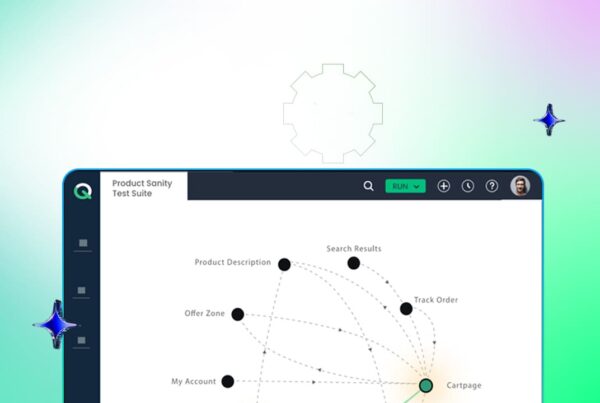Working with Data Types and Data Lists in ACCELQ: A Complete Guide

When it comes to data analytics and building software, data types and data lists are important components in ensuring an application behaves as expected. Data types play a crucial role in the definition of data, informing how values are formulated, processed and checked. If you are a developer designing or troubleshooting a build, understanding the best ways to deal with data types and lists is fundamental to making your tests more readable, accurate and faster.
In this blog, we will take you through the significance of data types and data lists, how they take your test automation strategy to the next level, and how to use them efficiently in ACCELQ.
What are Data Types?
Understanding Data Types in Programming and Testing
A data type is a classification that allows a variable or a function to store a specific type of value. Data types: It is used to specify the list data types, the nature of data and what type of operation can be conducted on that data. The main purpose of the data types is to define the type and the constraints of the values that can be represented by the variables.
Data types in ACCELQ are all about making sure that the correct values are preserved and acted on in test automation.
Here are the most common data types used in programming and automation:
- String: Used to store text, symbols, or alphanumeric characters.
- Example: “Jack”, “Good Morning!”, or “abc123”.
- Integer: Used to store whole numbers, including both positive and negative values.
- Example: 5, -10, 0.
- Float: Used to store decimal numbers.
- Example: 3.14, -6.25, or 0.07.
- Character: Used to store a single character, such as a symbol, letter, or even a blank space.
- Example: “@”, “9”, or “_”.
- Boolean: Used to store logical values, either TRUE or FALSE.
Why are Data Types Relevant in Software Testing?
In software testing (especially with automation frameworks like ACCELQ), the definition of data types ensures the test case passes with the correct values on input. It helps in the following:
- Test Cases: Data types help in structuring the way we want our test cases to be written, as they describe how the variables should act during run time.
- Managing variability of data type: Data types help handle different input formats, e.g., text versus numbers, so that tests are thorough.
- Increase Test Coverage: By using structured data types, testers can specify certain types of data for testing and ensure that every possible combination is tested.
What are Data Lists?
Exploring Data Lists in Testing
A data list refers to a collection of values that are used to store multiple variables of the same or different types. For example, in an eCommerce application, you may have a list of customer names, order IDs, or product prices. Each of these variables might belong to a different data type.
There are three main data list types used in ACCELQ:
- List – String: Stores string or text values, up to 255 characters in length.
- Example: Customer names, email addresses.
- List – Number: Stores numerical values, up to 15 digits in length.
- Example: Product prices, quantities.
- List – Date: Stores date or date-time values.
- Example: Order dates, appointment times.
Data lists are particularly useful in test automation for managing large volumes of input data and feeding them into application fields during testing.
Data Types vs Data Lists: Key Differences
Difference Between Data Types and Data Lists?
The main difference between data types and data lists lies in how they store and handle data:
- Data Types represent individual data elements with a specific structure. For example, in a banking application, an account type could be a String (“Standard” or “Platinum”), while the account balance could be a Float (100.50 or -250.75).
- Data Lists represent collections of values. For example, an account status field in a banking application might have a list of statuses such as “New”, “Active”, or “Closed”.
For more on how codeless test automation can enhance data handling, explore the platform’s features.
Data Types vs Data Lists in Data Structure
In a data structure sense, data types describe what sort of data is manipulated (such as text, numbers or boolean values), with data lists being packages of multiple such entries in a sequential or structured form.
Data types are for when all of your values must be in a certain constraint or format, and data lists are for multiple values of the same type that all need to be tested.
Data Types vs Data Lists in Python
For languages such as Python, data types are a fundamental concept in establishing what kind of values we want to store in each variable and freeing up when done. Python has built-in data types as String, Integer, Float, List, Boolean, etc. Likewise, in Python, we store sequences of data in data lists, and the data contained in these lists can each be of a different type.
Learn the best practices and enhance your test automation skills in our detailed Python Regex Testing guide.
How to Work with Data Types and Lists in ACCELQ?
Creating and Managing Data Types in ACCELQ
ACCELQ provides a simple and intuitive interface to manage data types and data lists. Here’s how to create and manage data types in ACCELQ?
1. Create a Data Type:
- In ACCELQ, click the “Create Entity” icon and select “Data Type”.
- Add a name and description to your data type (optional).
- Choose whether the data is Fixed or Variable, depending on whether the values change across test cases or environments.
- Add tags and partition the data type for easy management.
2. Create a Data List:
- Similarly, click the “Create Entity” icon and choose “Data List”.
- Name the list and add the corresponding data values.
- Choose from List – String, List – Number, or List – Date, based on the required field type.
Managing Data Types and Lists in Test Automation
- Use Data Types for Structured Tests: When creating test scenarios, you can reference data types to structure how data should behave during execution.
- Use Data Lists for Dynamic Test Scenarios: When performing tests across multiple values, data lists are used to feed different inputs into the application fields, ensuring more coverage.
What are the Best Practices for Managing Data Types in ACCELQ?
Organizing Data for Efficient Testing
To maximize the benefits of data types and data lists, follow these best practices:
- Define Clear Data Structures: Clearly define what each data type represents and ensure they align with the application’s requirements.
- Leverage Data Lists for Variability: Use data lists to test different combinations and ensure the application behaves correctly across multiple inputs.
- Use Partitioning for Classification: Partition data types to handle multiple values or instances that belong to different classes or environments.
- Keep Data Types and Lists Organized: Tag and categorize data types and lists appropriately for easier management during test creation.
Check out these best practices for test automation to ensure optimal use of data types and lists in your test cases.
Conclusion
Data types and lists are enabling concepts for well-structured test automation. Whether the data types are used to control the variable behavior or lists to dynamically validate an input. Both ACCELQ are equipped to enable refining your testing strategy. Easy data type and list manipulations and best-practice advice make it easy to have fuller test coverage, faster, and more accurate code.
Want to be part of ACCELQ’s mission to make test automation simple? Contact us today for a product demo and let us help you elevate your testing to the next level.
Yuvarani Elankumaran
Technical Consultant at ACCELQ
Yuvarani Elankumaran is a highly skilled technical consultant at ACCELQ. With over a decade of experience in the field of Test Automation, Yuvarani is a seasoned professional who is well-versed in a variety of programming languages and automation frameworks.
You Might Also Like:
 How to Get Started with ACCELQ – A Comprehensive Guide
How to Get Started with ACCELQ – A Comprehensive Guide
How to Get Started with ACCELQ – A Comprehensive Guide
 Synthetic Data Generation in Automation Testing: A Complete Guide
Synthetic Data Generation in Automation Testing: A Complete Guide
Synthetic Data Generation in Automation Testing: A Complete Guide
 Building A Successful Test Automation Team
Building A Successful Test Automation Team
































